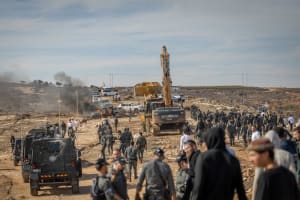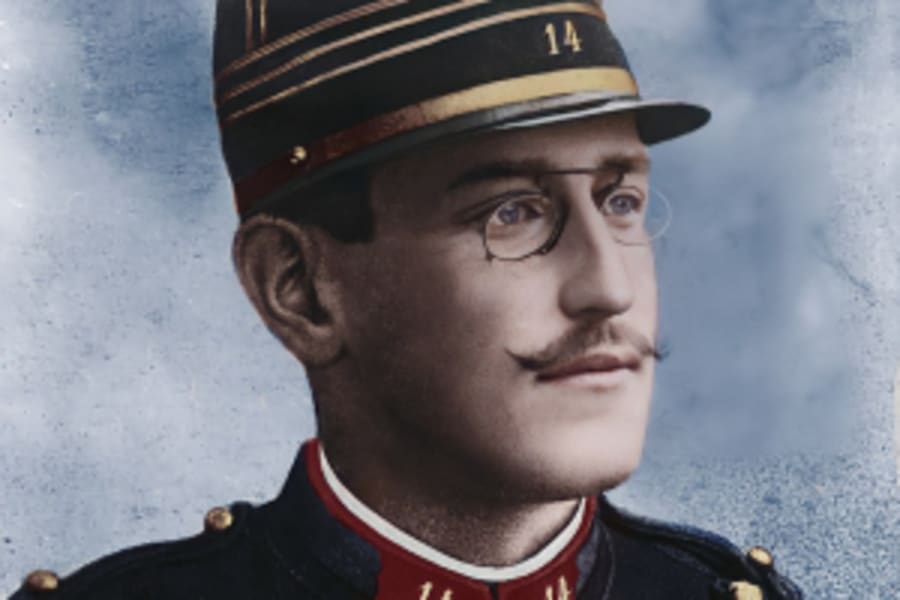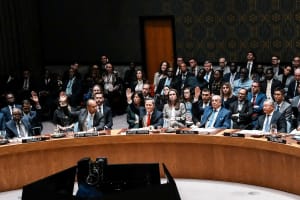Bloody-hand symbol utilized by Oxford anti-Israel protestors sparks new firestorm
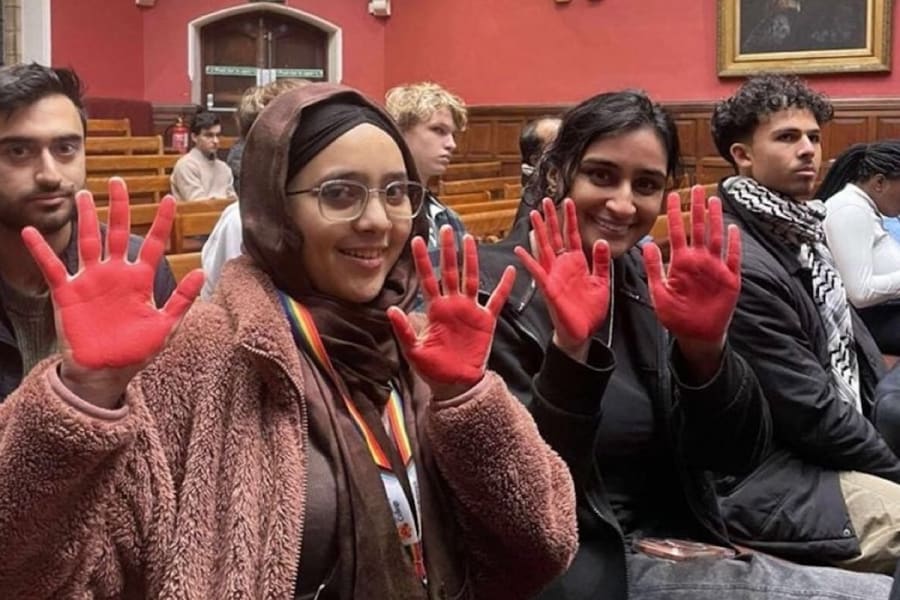
Anti-Israel protesters trying to prevent former Israeli Prime Minister Ehud Omert from addressing the Oxford Union came with hands painted red, sparking strong reactions.
The former prime minister was coming to speak about "the possibilities and limits of diplomacy, and the evolving realities of the Middle East," according to Haaretz. However, some 60 protesters caused disruption and delay to the event, shouting and blocking the entrance.
Images of keffiyeh clad students brandishing red-painted palms inside the debating hall have been circulating from the debacle; an image forever welded into the Israeli psyche as connected to the Ramallah lynching in 2000.
The Oxford Union is known for its lively debates, but now the red-handed protesters are launching another debate altogether in the twittersphere: Do they know what it means? After all, the lynching happened before many of these students were even born. And what does the symbol of a red hand in relation to the Israeli-Palestinian conflict mean in actuality?
The same union recently voted in favor of the motion “Israel is a greater threat to regional stability than Iran” in a debate between Hillel Neuer from UN Watch and Palestinian Authority Prime Minister Mohammad Shtayyeh, staking their colors to the mast, so it is entirely possible that the red hands were intentionally harking back to the infamous Ramallah lynching.
On Oct. 12, 2000, IDF reservists Vadim Norzhich (33) and Yosef Avrahami (38) had been driving in a civilian vehicle to a meeting point at the settlement of Beit El. Being unfamiliar with the West Bank road system, they drove through the military checkpoint outside Beitunia and accidentally entered the Palestinian city of Ramallah. There are signs warning Israelis that it is forbidden to enter certain areas of Judea and Samaria for precisely this sort of reason. It wasn’t long before the two men were dead.
They were detained by Palestinian Authority police at the local police station, and rumors quickly spread that they were undercover agents. Tensions were running sky high at the time, since the incident happened during a funeral of a boy shot by the IDF and in the wake of some 100 Palestinian deaths in clashes with Israel, according to the Jerusalem Post. Despite the efforts of 13 Palestinian policemen, the angry crowds stormed the station.
What followed next has haunted almost all who heard about it for decades since. As Melanie Philips posted on 𝕏, “In 2000, two Israeli reservists were lynched by a frenzied Palestinian Arab mob in Ramallah. They were slaughtered and mutilated. Their intestines were ripped out and thrown to the screaming mob. One of the murderers held up his bloody hands in jubilation.” For Philips there is no doubt in her mind that the students were aware of the incident and the symbolism of their protests: “That’s the meaning of the red hands held up by these Oxford students. The Oxford Union now celebrates the psychotic murder of Jews,” she wrote.
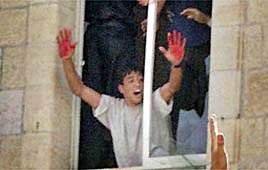
An Italian news outlet captured the photo of Aziz Salha raising his blood-soaked hands to the cheering crowd before the bodies were thrown out the window, mutilated and set on fire. The highly charged incident epitomizes the Second Intifada in which about 1,000 Israelis and 2,000 Palestinians were killed, and was the first incidence of political violence broadcast around the world as the internet age began, JPost reported, 20 years after the event. So significant was the image that it featured on the cover of TIME Magazine. Since the incident 25 years ago, that image and footage of those bloody hands and the delighted crowds below still evokes strong reactions.
While most responses to the post by Melanie Philips remembered the incident with horror, other voices protested that Israelis had no business being in Ramallah. One asked why they were in Palestine, insisting, “Ramallah is not part of Israel.” Another challenged, “please explain what two 'Israeli reservists' were doing in Ramallah.” Some seem to think that Israelis have no right to exist in Palestinian land at all and deserve to be killed. Due to the tensions at the time of the lynching, some still defend the actions of the mob as valid resistance to Israeli oppression while others are even glorying in it.
The Oxford protesters are not the only ones proudly displaying red hands to cameras. At last year’s Oscars, a host of Hollywood stars posed with glossy red pins showing a red hand including Billie Eilish, Mark Ruffalo, Cate Blanchett, Ben Affleck, Jennifer Lopez, Bradley Cooper and Mahershala Ali, Finneas O'Connell, Ramy Youssef, and Ava DuVernay, among others.
The pins were produced and distributed by an organization Artists4Ceasefire, who claim that the image is simply a demand for an end to the war. “The pin symbolizes collective support for an immediate and permanent cease-fire, the release of all of the hostages and for the urgent delivery of humanitarian aid to civilians in Gaza,” Al Jazeera reported.
“We are asking for an immediate and permanent ceasefire in Gaza,” said actor and comedian Ramy Youssef. “We are asking for justice and peace for the Palestinian people and also you know, a really universal message, which is let’s just stop killing the children."
Due to the insistence that the symbol is simply a request for a ceasefire, it was possible for celebrities wearing the pins to do so without overtly condoning the Ramallah lynching, and to stay in a grey area of plausible deniability.
But now that we have a ceasefire in place, we have to ask: Do those Oxford students know what those red hands mean?
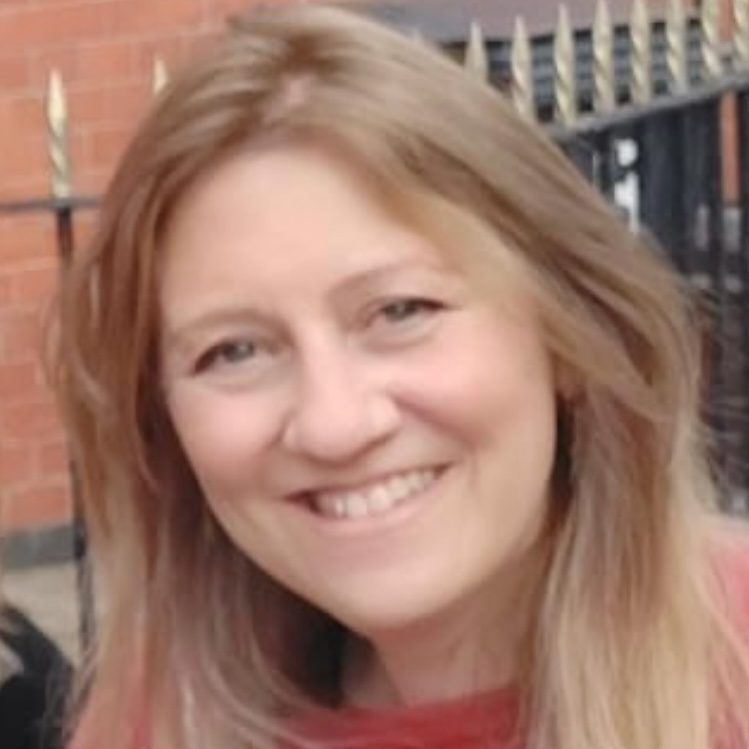
Jo Elizabeth has a great interest in politics and cultural developments, studying Social Policy for her first degree and gaining a Masters in Jewish Philosophy from Haifa University, but she loves to write about the Bible and its primary subject, the God of Israel. As a writer, Jo spends her time between the UK and Jerusalem, Israel.



